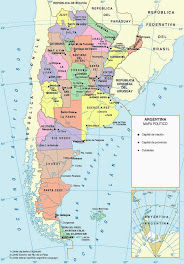
Dinner for two at a restaurant in Palermo - $100
Bottle of Argentine Malbec - $40
Not having your car stolen - $20
On nearly every city block near any nightspot, be it a restaurant, theatre, bar or club, vehicle protectors operate the streets of Buenos Aires, charging after dark, an average price of 20 pesos.
Cuidacoches, or trapitos (rags) as they are often referred to for the cloth they carry to give your windscreen a wipe while they look after your car, are private citizens who make a public city street their own. Their assumed task is to guide you into a space on the side of the road, and to then insure that your car is safe from thieves while you’re in the restaurant. In return they expect 20 pesos.
And if you don’t pay?
Well, don’t expect your car to be there when you get back.
Some might call it good entrepreneurial thinking, exploiting fear in the market and making a living from it. Successful businessmen have been doing it for years. Others would say it’s pure blackmail. A public citizen charging you cash to leave your car on a public street.
Some trapitos take their profession more seriously than others. Like the gentleman who works a corner near touristy Plaza Dorrego in San Telmo. He dresses in full military combats, complete with a hunting knife in his army belt. But most filling their pockets by guarding your car look like more trouble. And looking like trouble is probably good for business.
How does this illegal practice go unpunished by the authorities?
Official reports say there have only been two complaints so far this year. And the practice, though reaching new heights in prices, has been going on since many can remember. But whereas in past times, the driver chose how much of a tip to leave, now if you don’t pay what is demanded, you will at least be left with a nasty scratch down the side of your vehicle.
Furthermore there is a certain degree of trust in it all. Outside the Lagos de Palermo Golf Club, members even hand over their keys to the guy that runs the streets there. He is often to be seen shouting instructions to his boys to move cars and make extra space, while he holds on to the giant ring with keys to more than twenty five cars hung there. Twenty five cars with a value of US$15,000 – US$30,000; that’s a total of perhaps US$500,000 in his hands.
So it seems porteños prefer to just pay and be done with it. But if possible when they come back to their car, to ensure that the cuidacoche has at least done something for his money.
Dinner for two at a restaurant in Palermo - $100
Bottle of Argentine Malbec - $40
Not having to worry about your car on the street - PRICELESS



















